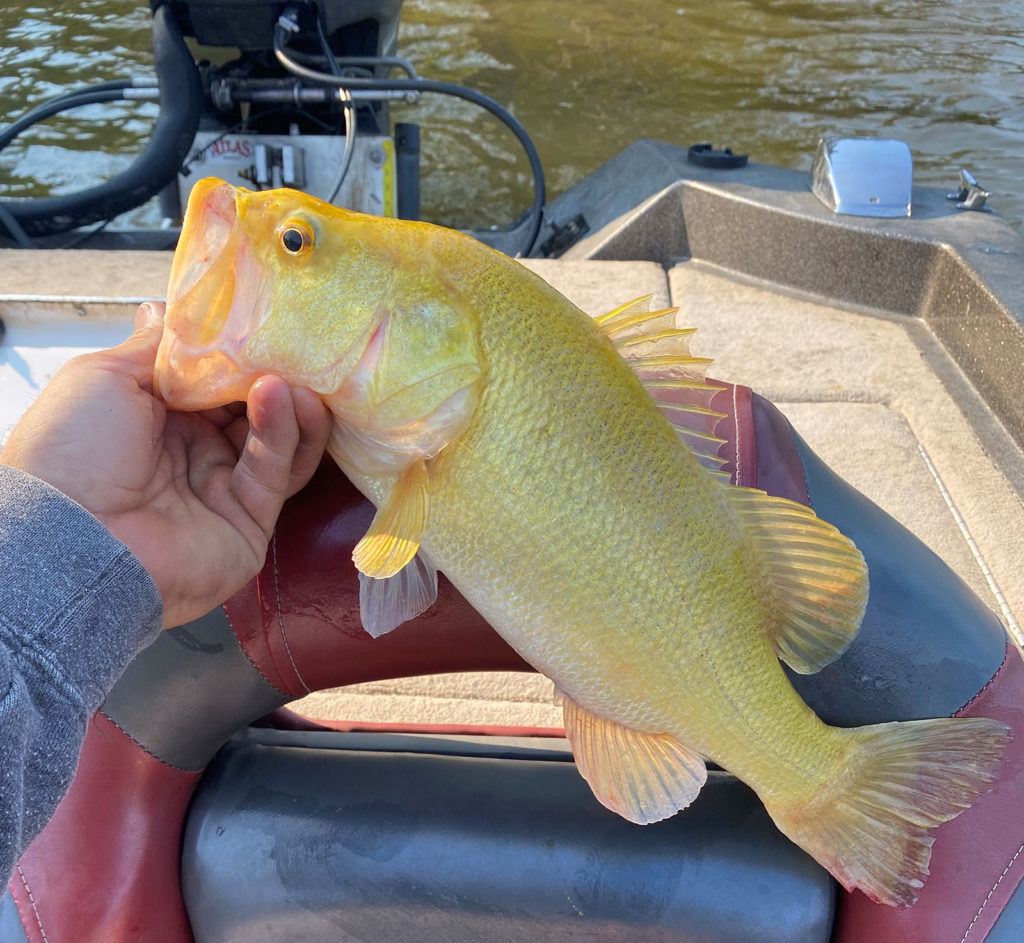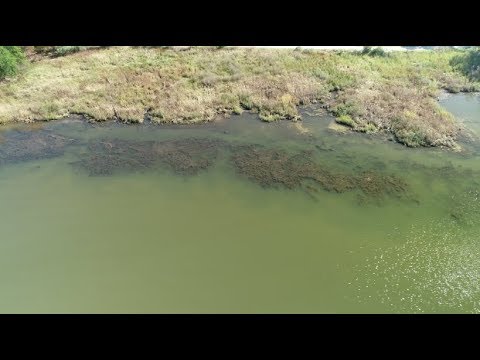Angler Jacob Moore made news last week when he caught a rare gold-colored largemouth bass in the lower James River near Chippokes State Park. He was practicing for a local bass tournament when he caught the healthy, well-fed 16.5” fish, so the species wasn’t unusual, but the coloration certainly was. He took a photo of it and gently released it.
It turns out that the gold coloration, while rare in a bass this size, is a condition that expresses itself in many species of fish. Type xanthism in fish into your favorite search engine and you’ll find plenty of examples, including two other golden largemouth bass from Florida and Ohio, plus a pair of golden smallmouth bass from Michigan.
The story of one of the smallmouth bass, published in The Fisheries Blog, offers a good, short explanation of this color anomaly and several others that cause additional color variations in fish. It turns out that most fishes’ skins contain multiple pigment cells, including orange/gold xanthophores and dark melanophores. The mechanism has to do with genetic mutations that block expression of one or more sets of pigment cells. Xanthism occurs when a mutation blocks the expression of the melanophores. The blockage can be complete, as in Jacob Moore’s bass, or partial, in which the fish may develop unusual blotches of color. Albinism is a complete lack of color expression, producing white skin.
It turns out that these odd color schemes may not be as unusual as they seem. What is unusual is for a fish like this James River golden bass to survive long enough to grow to 16.5” and a weight of 2.5-3 lbs. An abnormal color is not a good survival characteristic. A typical largemouth bass blends in very well with its surroundings, while a golden or albino fish sticks out like a fluorescent light, becoming a target its whole life for every predator in its home waters and the air above it.
“What’s remarkable about this golden bass,” said Dr. Mike Bednarski, Chief of Fisheries at Virginia’s Department of Wildlife Resources, “is that it survived that gauntlet of aquatic hunters for long enough to grow to a healthy size.”
For all we know, the James—and most other Chesapeake rivers, may produce golden bass relatively frequently, only to have them eaten in their early life stages by other fish, including larger bass, river otters, or diving birds like ospreys. That Chippokes golden bass is a pretty fish. We wish it well in its future endeavors.
-John Page Williams




